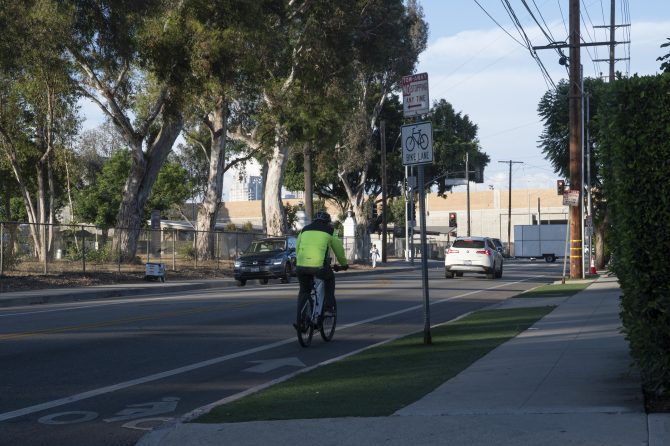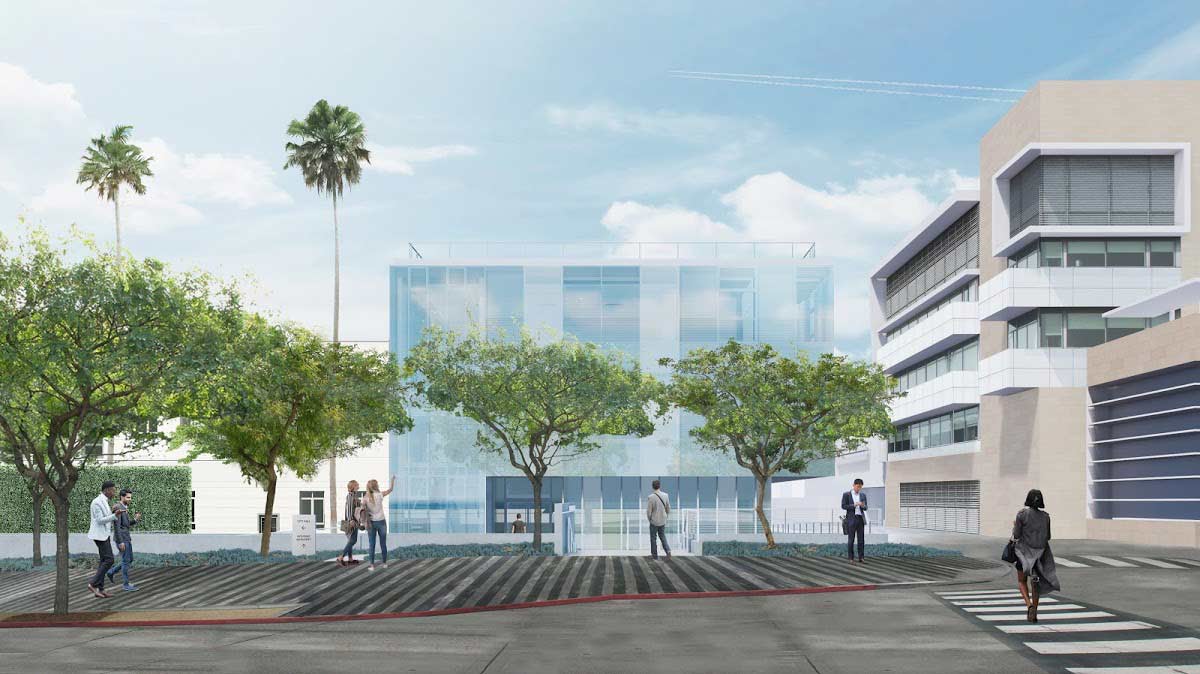(part 2 of a 2 part article)

Last week’s article covered why there is negligible population growth pressure in spite of the common misconception of a housing “shortage”, and ended with the question: why can’t we just build more housing to increase supply and thus reduce demand? The problem is that the supply and demand analogy breaks down when dealing with housing construction.
If we made more Ferraris, will the cost of Priuses go down? Of course not, they are two different market segments. Likewise, the housing market is segmented like cars, but there are two significant differences.
First buildings are fixed and therefore it matters where they are located. They are impacted by a lot of external factors that are unique to their location, such as proximity to the beach in our case. That factor is driven by the fixed amount of land (beach) at that location, regardless of how many units are built on the land in that location. Santa Monica will always be more expensive than Lancaster. So, location sets a fundamental (very high and rising) land cost, regardless of how many units are built there and regardless if the units are market rate or affordable. A land seller always sets their price based on how much can be built there, so when upzoning happens, land values happily rise to the new inflated level making affordability even more unreachable.
Second, to continue the car analogy let’s consider Henry Ford’s genius, the assembly line. Among other things, it was so efficient that it allowed even the workers (with union support) to be able to afford to buy the very cars they were manufacturing. Today that is no longer the case. Because local median incomes are no longer related to housing values, the carpenters building Santa Monica’s buildings cannot afford to rent much less buy them. In fact, the vast majority of all the workers on the design, finance, plan check and building team (the project “assembly line”) for a typical project cannot rent or afford to buy the very product they are creating. This simple fact, which is not likely to change soon, explains why Santa Monica can never build its way to affordability without using some form of housing subsidy.
Within our location, relative to most other locations, virtually every unit built is a Ferrari. For-profit housing developers only want to build Ferraris here, because that’s where the money is. In fact, they can ONLY build Ferraris profitably, due to the high cost of the land and construction. If you want them to build affordable housing, you must pony up a subsidy.
In the case of the proposed Gelson’s project at Lincoln and Ocean Park, the subsidy is two extra floors but this only gets you a miserly 10% of units being affordable perfectly showing how useless density increases are in creating significant affordable housing.
The fact that income has never kept up with housing costs since the 1980s, temporarily masks the other real limits to increasing both market rate and affordable housing quantity: gridlock, water shortage, pollution of all kinds, land scarcity, funding scarcity, power deficiency, infrastructure inadequacy etc. etc. These real growth constraints are all still there, waiting to cripple any housing program, but are momentarily hidden by the seemingly endless arrival of wealthy buyers and renters.
Why Santa Monica Cannot Become Affordable Using Market Forces
In Santa Monica’s case, there are two other variables to consider. In the last 50 years to 2020 the city has added 10,067 units while the population grew from 89,736 to 93,043 (just less than 1% per eight-year interval). These 4,754 new residents would have needed about 2,377 new units (at a typical 2 persons per unit), but they now “occupy” numerically 1/2 person per new unit. This tells us that the wealthy tenants/buyers, that can afford these new units, simply take up more space (fewer residents per unit) OR that rental units are being bled off to other uses (Air BnB, commercial uses, corporate housing, 2nd homes, etc.) faster than they can be built. It’s probably a combination of these two forces. Another way of understanding this, is that numerically about half the units built in the last half century are now vacant! In other words, building in Santa Monica is incredibly inefficient: you have to build two units just to get one occupied.
Finally, even though there is no general population increase demand for housing (see last week’s article), we have for the last half century been playing monopoly to bring in more wealthy renters/buyers to flush out the poor, in spite of the herculean efforts of many non-profit housing providers and the Rent Control Board. As our high rents and prices push out families and poorer residents, we swap them out by harvesting wealthy tenants or buyers from all over Los Angeles and even from the whole world because Santa Monica remains such a desirable destination. So, while the number of residents doesn’t change very much, the kind of typical resident changes completely. Inevitably this gentrification is brutal against the remaining 72% who are tenants and small businesses. These live in terror of being evicted and not being able to find a comparable place here and can never even dream of becoming owners. We cannot flatten the supply and demand curve because these motivated well-heeled new buyers and renters all want a place in the sun by the beach and they can always outbid the natives. Essentially demand by the new mobile wealthy renter/buyer is for now infinite, while the available resources (supply) for current modest earners are very limited.
Who Can Afford to Live Here?
How limited you ask? The basic statistic(a) is that 43% of Santa Monicans spend more than 30% of their income (the conventional definition of being housing burdened) on housing and almost a quarter (22%) spend an astonishing 50% of their income on housing. We are a City truly suffering a crushing housing burden. You might hope that the arriving increasingly gentrified residents’ income would eventually catch up with rents/prices and make the whole City affordable for the survivors of all this economic “cleansing”? Unfortunately, this is not in the cards because in the 18-year period from 2000 to 2018, the median cost of a Santa Monica home went up from 8.42 years of median income to 16.91 median years of income. That 2018 median sales price was $1.456 million. In 2021, that median sales price had ballooned to $3.3 million according to the LA County Assessor. Has your income doubled in the last 3 years?
This housing cost increase does not reflect population pressure but the financial pressure of available worldwide capital looking for profitable investment opportunities regardless of the impact on local communities. We are being swamped with these outside and outsized investments, essentially being crushed by the “success” of being a desirable destination.
Statewide, the problem is that in the last 10 years, over 80% of the jobs created were below the median income in California. Good paying middle and upper middle-class jobs are going to other states. And, this is not likely to change with the recessionary drumbeat of war on the horizon. So, while the State claims that all the mandated upzoning is required to create affordable housing and undo historical housing racism (worthy goals), what is really being created here is state-sanctioned economic segregation. The poor must leave so the rich can arrive and thrive. This is another opposite outcome to the professed goals of the State’s housing policy.
The unavoidable fact is that there is no known instance where previously unaffordable areas have been made affordable by market rate densification alone.
Show me the Money
Of course, California’s legislature knows all these problems and of course the Assembly and Senate have not earmarked any funds sufficient to the task. Can you say unfunded mandate? Just to meet Santa Monica’s mandate of about 6,158 new affordable units would cost around $5B of the State’s projected $46B+ surplus. Statewide, the affordable mandate is 1,415,458 units. That would cost over $1 trillion. Simply put, if the State wants affordable housing, it needs to pay for it by building deed restricted, net zero affordable housing. Without that dedicated funding, cities that try to up zone themselves to affordability are on a dangerous fool’s errand.
Even though the State housing mandates wear the fig leaf of the desirable fight against historical racism and of promoting affordable housing, their real purpose has been to create a market rate housing speculation machine, and the gentrification that comes with it. It encourages streamlined wealth extraction and concentration by the few from the many.
Santa Monica is a perfect place to play this con and we are all victims of this scam that has been going on for decades but is now becoming unavoidably evident. While we face a real affordable (not market rate) housing shortage and a real ecological disaster, Sacramento keeps spinning fairy tales of infinite growth. We do not have to believe these fantasies.
By Mario Fonda-Bonardi AIA for
S.M.a.r.t Santa Monica Architects for a Responsible Tomorrow
Thane Roberts, Architect, Robert H. Taylor AIA, Ron Goldman FAIA, Architect, Dan Jansenson, Architect, Building and Fire-Life Safety Commission, Samuel Tolkin Architect, Mario Fonda-Bonardi, AIA, Planning Commissioner, Marc Verville M.B.A, CPA (Inactive), Michael Jolly, AIR-CRE.
For previous articles see www.santamonicaarch.wordpress.com/writing
(a)
https://www.smgov.net/departments/pcd/agendas/Planning-Commission/2020/20201209/s20201209-10Ac.pdf













